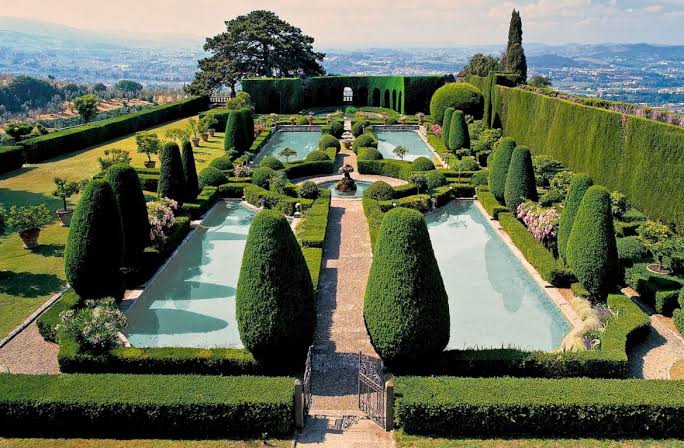Italian gardens are celebrated worldwide for their elegance, symmetry, and timeless charm. If you want to bring the beauty of Italy to your home, Your ultimate guide to Italian garden! is here to help you create a sophisticated outdoor space that balances nature, art, and design.Italian gardens are more than just decorative spaces—they are an experience. Characterized by manicured greenery, classic sculptures, flowing water features, and vibrant flowers, they evoke a sense of calm, luxury, and Mediterranean flair. Whether you live in a city apartment with a small terrace or a sprawling backyard, you can adopt Italian garden principles to transform your outdoor area into a picturesque haven.Key Features of an Italian GardenItalian gardens have distinctive characteristics that distinguish them from other styles. Understanding these elements is the first step in designing your own.1. Symmetry and GeometryItalian gardens are often highly structured.Paths, flowerbeds, and hedges are arranged symmetrically to create balance.Consider using geometric shapes like squares, rectangles, or circles for planting areas and pathways.2. Sculptures and ArtStatues, fountains, and urns are central to Italian gardens.Classical statues or replicas of Renaissance pieces add elegance.Even small gardens can incorporate mini sculptures for a Mediterranean feel.3. Water FeaturesFountains or small reflecting pools provide a calming, luxurious touch.Consider a wall-mounted or tiered fountain for smaller spaces.4. Terraces and LevelsItalian gardens often have multi-level designs connected with stairs or terraces.Even in small areas, using raised beds or planters can mimic this effect.5. Green Hedges and TopiaryBoxwood, cypress, and other evergreen shrubs form hedges and borders.Geometric topiaries add structure and a formal aesthetic.Choosing Plants for Your Italian GardenPlant selection is crucial for authenticity. Italian gardens typically include a mix of greenery, flowers, and aromatic plants.1. Evergreen HedgesBoxwood and yew are ideal for structured borders.Italian cypress can provide vertical interest and elegance.2. Flowering PlantsRoses, lavender, hydrangeas, and wisteria are common choices.Mix colors carefully to maintain a sophisticated, harmonious palette.3. HerbsRosemary, thyme, basil, and sage are staples of Mediterranean gardens.Plant herbs in raised beds or pots for easy access and visual appeal.4. Climbers and VinesIvy, climbing roses, or jasmine add vertical beauty and fill empty walls.They also create a romantic, Mediterranean atmosphere.Design Principles for Your Italian GardenTo achieve the classic Italian garden look, focus on these design principles:1. PathwaysUse stone, gravel, or brick paths to guide visitors and connect garden areas.Geometric patterns like straight lines or crossing diagonals enhance symmetry.2. Focal PointsCreate a central focal point such as a fountain, sculpture, or pergola.Arrange paths and planting beds to draw attention to these key elements.3. Outdoor SeatingBenches or wrought-iron chairs allow relaxation and appreciation of the garden.Position seating near focal points for maximum enjoyment.4. Containers and PlantersTerracotta pots are ideal for herbs, flowers, and small trees.Mix sizes and shapes to add texture and depth while maintaining balance.5. Seasonal ConsiderationsPlant a mix of perennials and annuals to ensure year-round beauty.Consider plants that thrive in your local climate while maintaining a Mediterranean aesthetic.Practical Tips for Creating an Italian GardenCreating a successful Italian garden requires planning and attention to detail. Here are some practical tips:Start with a Plan: Sketch your garden layout, including paths, flowerbeds, and focal points.Maintain Symmetry: Use geometric shapes and balanced plant arrangements.Use Evergreen Plants: They provide year-round structure and contrast.Incorporate Water: Even a small fountain enhances the Mediterranean ambiance.Focus on Texture: Combine smooth hedges, flowering plants, and climbing vines for depth.Choose Classic Containers: Terracotta, stone, or marble pots complement the Italian theme.Keep it Simple: Less is more—avoid overcrowding to maintain elegance and serenity.Enhancing Your Italian Garden with AccessoriesAccessories can elevate the style and authenticity of your garden:Sculptures: Classical statues or busts bring sophistication.Fountains and Water Bowls: Reflect the luxury of Italian gardens.Pergolas and Trellises: Provide vertical interest and shade.Garden Lighting: Soft lanterns or LED lights highlight pathways and focal points.Seating and Décor: Wrought-iron benches, cushions, or even a small table set create an inviting atmosphere.Benefits of an Italian GardenTransforming your garden using Italian principles provides multiple benefits:Aesthetic Appeal: Creates a visually stunning outdoor space.Relaxation and Wellness: Structured greenery and water features reduce stress.Increased Property Value: Beautiful landscaping adds curb appeal.Versatility: Suitable for entertaining, relaxing, or quiet contemplation.Cultural and Artistic Expression: Reflects timeless European design.ConclusionWhether you have a large backyard or a compact terrace, you can Your ultimate guide to Italian garden! as inspiration to create a Mediterranean oasis. By focusing on symmetry, focal points, evergreen plants, aromatic herbs, and classical elements like fountains and sculptures, you can transform your outdoor space into a serene, elegant retreat.Implementing these design principles allows homeowners in the United States, United Kingdom, or Canada to enjoy the beauty, sophistication, and tranquility of an Italian garden all year round. With planning, creativity, and the right plant selection, your garden can become a stunning outdoor living space—a true reflection of timeless Italian style.

